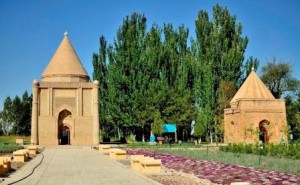 During a speech at an expanded government meeting, President Nursultan Nazarbayev said that most economic growth in Kazakhstan stems from the service sector. Its share of GDP has reached 53 percent.
During a speech at an expanded government meeting, President Nursultan Nazarbayev said that most economic growth in Kazakhstan stems from the service sector. Its share of GDP has reached 53 percent.
“Countries that persistently take measures to improve the competitiveness of their service sectors increase productivity. We still don’t pay enough attention to our service sector,” he said. “For example, each job created in tourism creates additional jobs in utilities, food and transport.”
Cultural and historical tourism has a lot of untapped growth potential here in Kazakhstan. There are more than a dozen historical and cultural sites in our region that were completely restored. We are now ready for tourists thanks to the Cultural Heritage State Programme. Now, we should pay special attention to the three supporting pillars behind the tourism industry – food, accommodation and our roads.
For example, Akyrtas, one of our nation’s unique monuments, is located only 45 kilometres from the city of Taraz and only eight kilometres from the road. If we build a good road, the number of tourists, both domestic and foreign will increase markedly. Also, it is necessary to bring water, telecommunications and electricity to other facilities. Then, entrepreneurs will willingly build hotels, catering facilities and open souvenir shops. Making souvenirs is a great way to create jobs and demonstrate our nation’s heritage to the world.
Our region is very rich and in addition to historical tourism, we can develop mountaineering and organise hunting in the desert (in the 1990s, Arab sheiks came to Kazakhstan for these purposes.) But in order to preserve nature and prevent poaching, we need a strong legal framework.
Everyone has heard of our cultural history sector, which includes the mausoleums of Aisha Bibi, Babaji Khatun and Karakhan. The biggest oriental bath-house in Kazakhstan, Kali Yunus Hammam is in the centre of the city of Taraz. These tourist sites were created jointly by patrons of our organisation and local authorities. There are also roads, telecommunications and retail outlets in the region.
We launched an initiative in Taraz to revive patronage. Last year, according to philanthropists, facilities at the mausoleum of Aisha-Bibi worth $1.2 million were built. Now more than 10 people work there.
The author is director of the Monuments of Ancient Taraz Historical and Cultural Reserve Museum.


